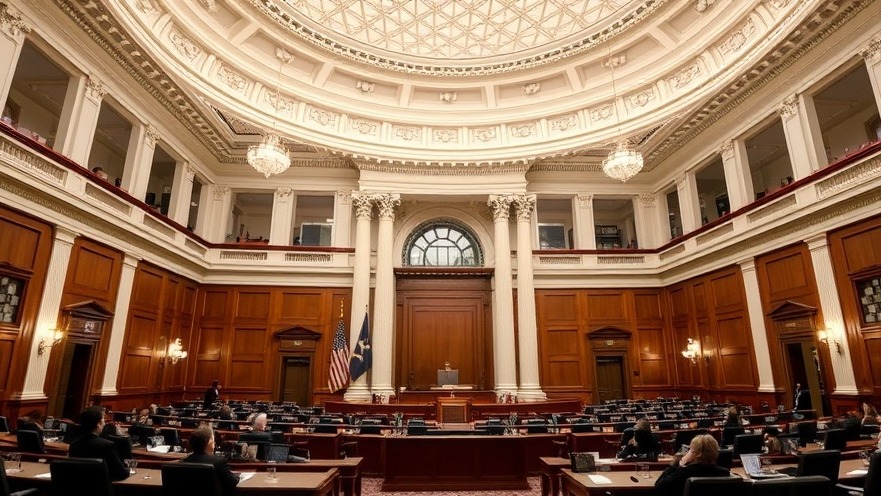
Texas Education System to Feature Ten Commandments Displays
The Texas state legislature has passed a pivotal bill requiring the Ten Commandments to be displayed in every public school classroom, a significant move poised to influence the educational landscape. Following weeks of contentious debate, the Texas House of Representatives passed the bill with an 82-46 vote and is now headed for approval from Governor Greg Abbott, who is expected to sign it into law. This legislative action aligns Texas with similar mandates in states like Louisiana and Arkansas, thus igniting discussions surrounding separation of church and state in the educational context.
Legislative Intent and Morality in Education
Proponents like Lieutenant Governor Dan Patrick highlight the bill's intent to infuse the moral values represented by the Ten Commandments into the curriculum. Patrick articulated that displaying such foundational texts would provide students with a moral compass akin to that embraced by the nation’s founders. This sentiment underscores an ongoing dialogue about the role of religious principles in public education, which is often met with opposition from those who advocate for a secular educational framework.
Legal Scrutiny on the Horizon
Despite its advancement through the legislative process, Texas's move to mandate these displays faces potential constitutional challenges echoing similar controversies faced in Louisiana. Critics argue that requiring public schools to display religious texts infringes upon the First Amendment's Establishment Clause, which prohibits the government from endorsing a particular religion. The anticipated legal battles underscore the intensity of this issue, as teachers and school districts grapple with compliance in the absence of clear enforcement mechanisms within the bill itself.
Nationwide Trends in Religious Education
With this enactment, Texas joins a broader national trend where various states are incorporating religious elements into public education systems. For instance, in recent years, states like Florida have seen legislative efforts aimed at promoting religious instruction, sparking debates about educational content and its alignment with secular education standards. Such movements reflect deeper societal rifts regarding Christianity’s place within public spheres, particularly in educational settings.
Community Reactions: Divisions and Agreements
Community reaction to this bill is mixed, with individuals across Texas expressing a range of opinions. Supporters view this as a restoration of a moral foundation within schools, while opponents warn of the implications for diversity and inclusiveness in public education. Furthermore, opposition from a coalition of parents representing various religious beliefs in Louisiana serves as a foreshadowing of potential protests and actions against similar measures in Texas.
Implementation Timeline and Future Implications
The bill stipulates that schools must begin displaying the Ten Commandments starting in the 2025-26 academic year. However, there is uncertainty regarding compliance and the specific repercussions for educators or institutions refusing to adhere to the mandate. This ambiguity leaves room for various interpretations, opening discussions on the practicality and implications of the bill's future implementation.
Conclusion: What Lies Ahead for Texas Education?
As this legislation moves towards final approval, its ramifications will extend beyond Texas classrooms, potentially stirring a national examination of educational policies regarding religion. The results of these discussions could reshape the future of education in America, highlighting the need for balanced approaches that honor both individual beliefs and communal educational integrity.
 Add Element
Add Element  Add Row
Add Row 



 Add Row
Add Row  Add
Add 


Write A Comment